How to Refinish Rattan Furniture
It’s easier than you think to bring rattan furniture and cane furniture back to life! Check out this quick tutorial on how to refinish rattan furniture!
Get more painted nightstand ideas here!

Refinishing rattan furniture is a great way to give your furniture an updated and stylish look.
In this post, we’ll provide easy step-by-step instructions for how to paint rattan to look natural, for any type of rattan furniture.
I’m not joking when I say I dug this unassuming table out from underneath a pile of junk in a warehouse and paid only $10 for it.
The rattan wasn’t damaged, but certainly had seen better days. I’ll be honest, I’m typically not a huge fan of painted rattan and really wanted to keep it natural, but how?
I figured chemical strippers were way too harsh for fragile, aging rattan. Learn more about how to remove wood stain here.
So I wasn’t going to risk attempting to strip it. I tried giving it a gentle sand, but didn’t get far before small pieces began flaking off.
So what’s the secret to bringing rattan back to its natural beauty? I almost guarantee it’s way easier than you think!
And would you believe it if I told you this Serena & Lily-Esque table makeover cost me about $30 total? After reading these easy steps, you’ll never be intimidated by rattan pieces in need of love!
Supplies Used for Refinishing Rattan Furniture
As an Amazon Associate, I earn from qualifying purchases. I also may earn from other qualifying purchases with other companies or get free product to review and use. All opinions are my own.
- Cleaner (I used Krud Kutter. Dawn dish soap would also work)
- Old Toothbrush
- Rag
- Painters Tape (optional)
- Priming Spray Paint
- Rust-Oleum Fossil
- Rust-Oleum Khaki
- Drop Cloth or Large Piece of Cardboard
Get my list of 10 must have painting furniture supplies here.
NOTE: If your rattan furniture needs repair, check out this post on how to repair rattan furniture before you refinish it!
Scrub Rattan Clean
Using your cleaner & toothbrush, give the rattan a good scrub.
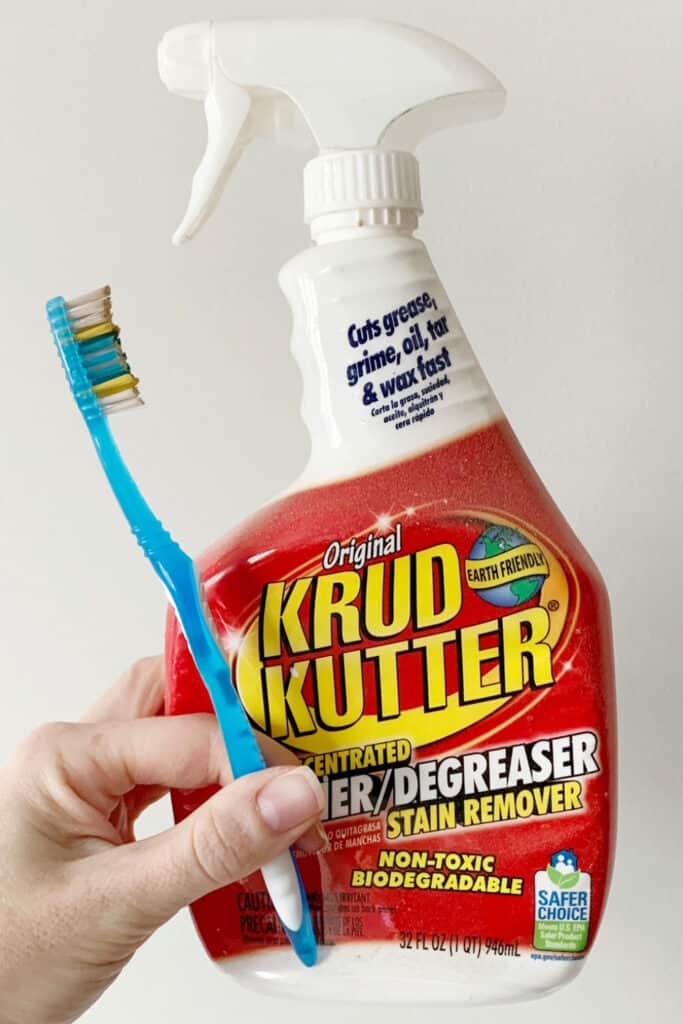
This will act as both a cleaning step, and in a way, a light sanding step to remove any previous residue or flaking rattan. Here’s how to clean furniture before painting.
Wipe it down with the rag and allow it to dry before moving to step two. Learn exactly how to prepare furniture for paint here.
If your rattan is damaged, this is the best time to fix it. Check out my post about cane furniture repair to learn more.
Tape Off if Needed
If needed, this is when you will tape off anywhere you don’t want the natural rattan color to go. For my table, I planned to paint the base black so taping it off wasn’t necessary.
After spray painting the rattan, I simply sanded and painted over the spray paint on the rest of the table. Get more information on how to protect your furniture from overspray here.
Prime Rattan
In a well-ventilated space, over drop cloth or cardboard, it’s time to get spraying!
First, using the priming spray paint, apply 1 coat allowing to dry per instructions on the can. Learn more about the best primers for painting furniture (and how to choose the right one) here.
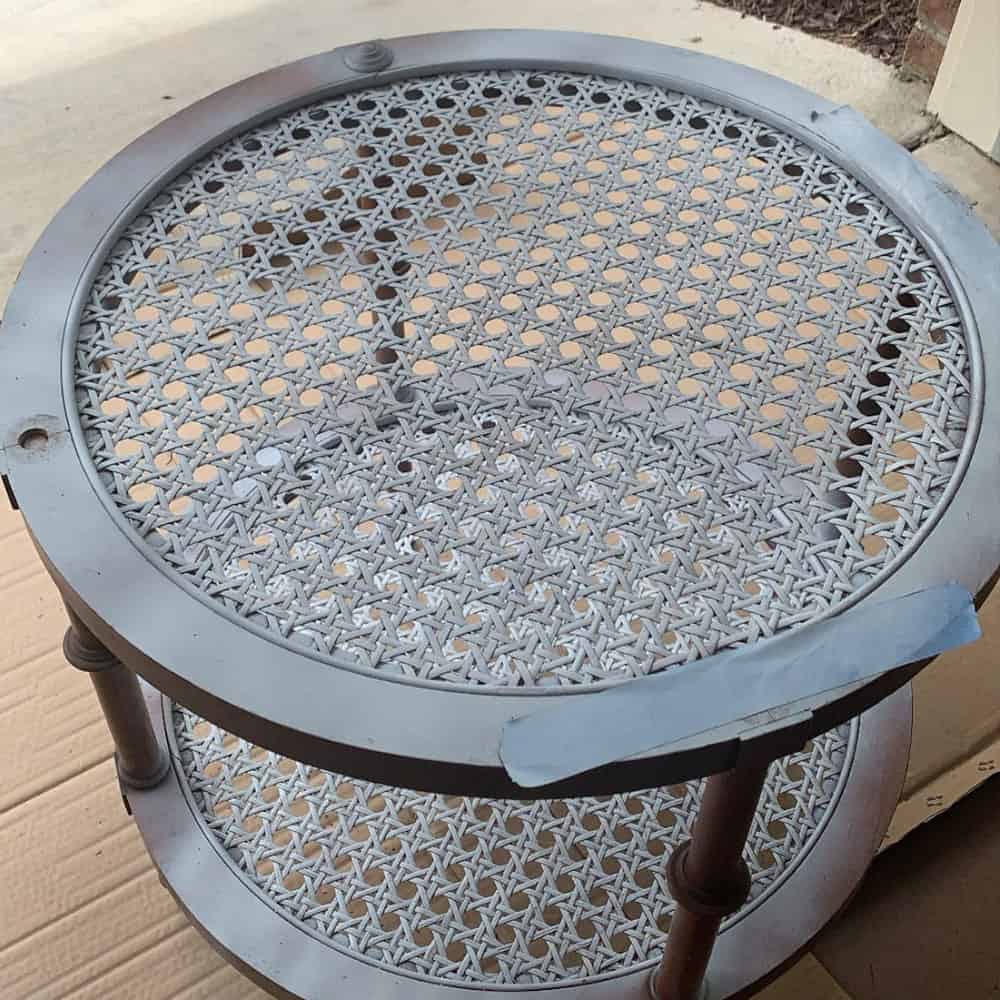
(Keep in mind paint will dry slower in cooler temperatures or humid conditions.)
Spray Paint Rattan
Next, take your fossil color of spray paint. Apply 2 full coverage coats allowing to dry in between. Get all the tips for spray painting furniture here.
You’ll notice it almost has a greenish hue and should appear quite matte. In my opinion, it isn’t the prettiest color in this step, but that’s what we want!
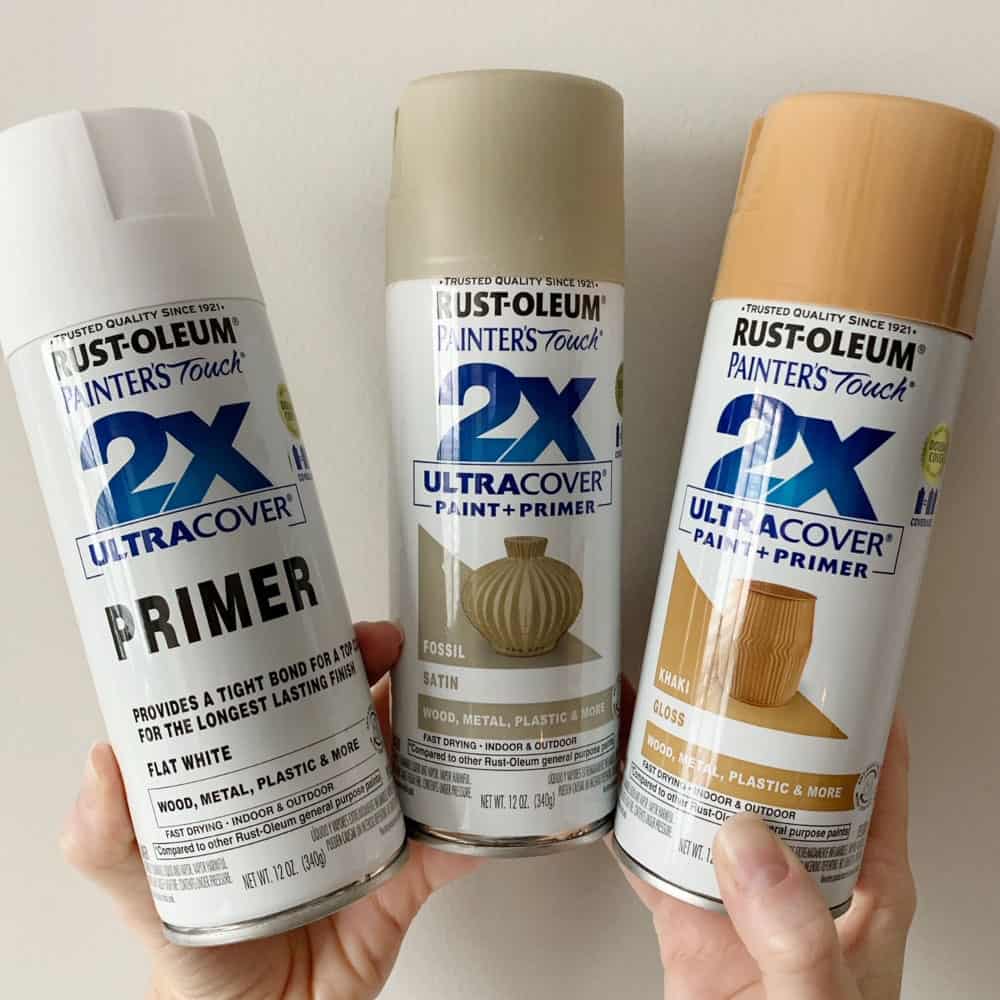
Once dry, get shaking on the khaki can.
Standing a little further away than the Rust-Oleum can recommends (approx 2 feet) and moving a little more quickly in the sweeping motion, apply a lighter coat over the fossil.
This will bring back some of the warmth that is naturally occurring in cane. You aren’t going for full coverage with this color, more of a dusting.
*** CAUTION: Try not to layer the khaki on too thick. This spray paint, unlike the fossil, has a much glossier finish. Ideally, you want to avoid a glossy look as this will make the rattan look less natural.
Check out this post to learn what spray paint is the best spray paint for furniture! (I was shocked by the results!!)
Top Coat Rattan (optional)
This particular table came with a glass top that fit over the rattan, so I did not topcoat it. However, if your piece will be in a heavier traffic area, I would recommend the addition of a topcoat.
Whatever your favorite brand, I would make sure it is matte! Check out this post to learn all about the many different topcoats for painting furniture.
Again, you want to avoid any glossy or satin finishes, which will take away from that natural, earthy rattan look.
Another caveat … it will need to be sprayed. Learn how to spray polyurethane topcoat here.
If you don’t own a paint sprayer (or don’t feel like getting it out, prepping and cleaning), then an easy alternative would be topcoat in a spray can.
The best spray can topcoat is Minwax’s waterbased polycrylic.
Now you have beautiful, natural-looking rattan! (It can be our secret that it’s actually painted).
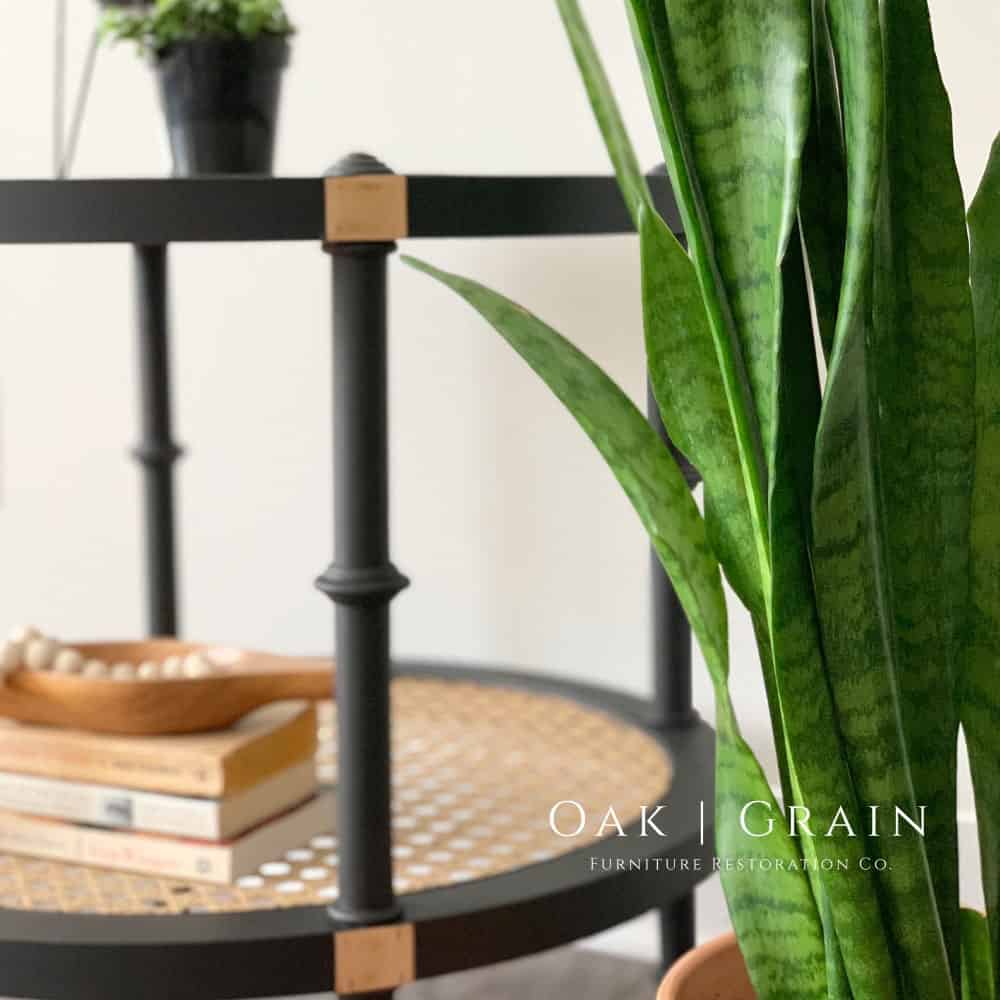
I also used this spray paint layering approach on a previously painted rattan shelf and was equally happy each time. So I know it’s reproducible! Check out more spray painted furniture ideas here.
How I Completed This Rattan End Table
After the rattan was back to its most natural color I believe you can achieve with paint; I sanded down the body of the table using 120 grit sandpaper.
Learn about the importance of sanding before painting furniture here, and the best sandpaper for furniture painting so you don’t ruin your furniture with the wrong kind.
If you need a sander, here are the best sanders for furniture.
I paid extra attention to the rectangles on the side of the legs with plans to keep them natural.
Check out how to refinish wood furniture legs and learn other techniques to create a wooden finish for your furniture legs.
This piece was one of my earlier projects (while I was still on a very tight budget), so fancy, expensive furniture paint wasn’t really a feasible option.
To keep it budget-friendly, I mixed up my favorite DIY chalk paint recipe using an $8 Sherwin Williams Color-To-Go sample quart in the color Caviar. Get our list of the best paint for furniture here.
Finally, I sealed with my go-to Trewax…. Voila! A literal soon-to-be-garbage warehouse find turned Serena & Lily magazine cover!
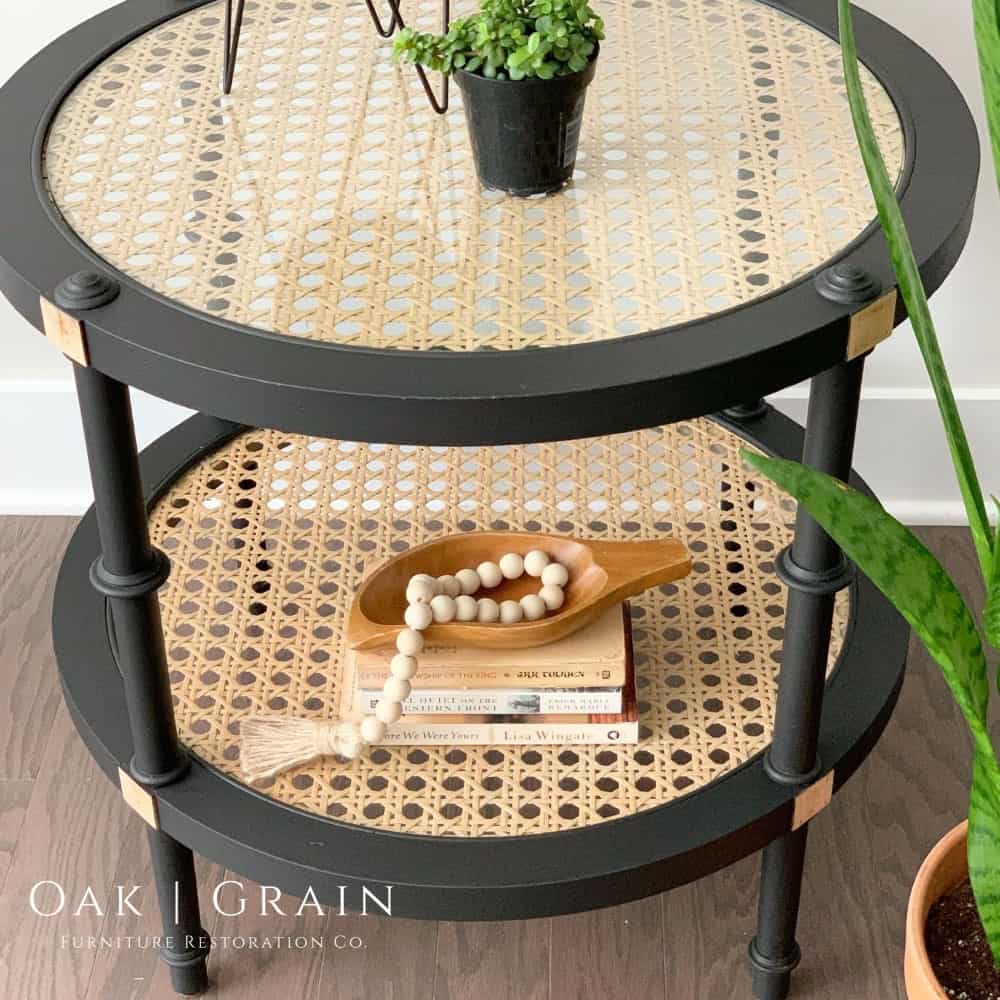
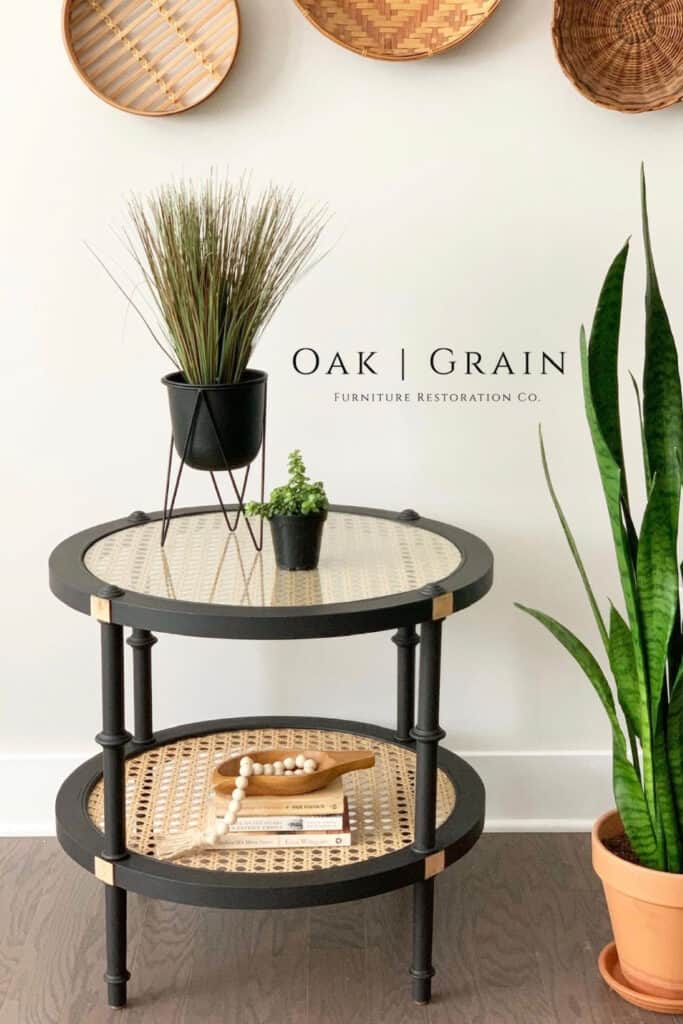
More Before And After Makeovers
Click any of these “before” photos below to view the “after” of that makeover.
How to Refinish Rattan Furniture
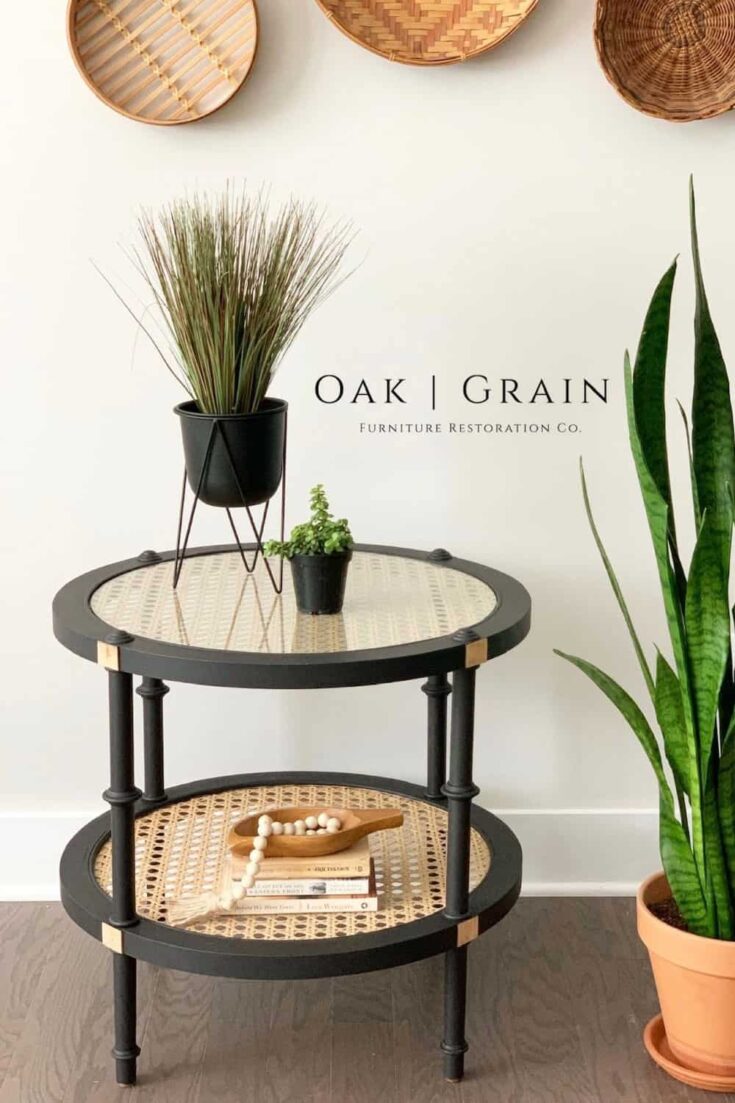
Paint rattan furniture to look natural instead of stripping. Here's how to refinish rattan furniture.
Materials
- Krud Kutter
- Old Toothbrush
- Rag
- Painters Tape (optional)
- Primer
- Rust-Oleum Fossil
- Rust-Oleum Khaki
- Drop Cloth or Large Piece of Cardboard
Instructions
- Using your cleaner & toothbrush, give the rattan a good clean scrub. Wipe it down with the rag and allow it to dry.
- Tape off (if needed) anywhere you don’t want the natural rattan color to go.
- In a well-ventilated space, over drop cloth or cardboard, apply 1 coat of priming spray paint, allowing to dry per instructions on the can.
- Next, take your fossil color of spray paint. Apply 2 full coverage coats allowing to dry in between.
- Seal your rattan furniture with a matte topcoat. (optional)
- Sand down the body of the furniture using 120 grit sandpaper then paint and seal it to complete your rattan furniture makeover.
Recommended Products
As an Amazon Associate and member of other affiliate programs, I earn from qualifying purchases.
This makeover was created by Jess with Oak and Grain Restoration. She currently lives in North Carolina where she works full-time in an emergency room. She loves dipping into her creative side by transforming furniture and in the process, keeping her sanity.
Follow her on Instagram to see more action behind the scenes!!
More Rattan / Cane Furniture Makeovers
Follow us on YouTube to get more tips for painting furniture.
Or share your project with us on our Facebook Group and be part of our community. See you there!
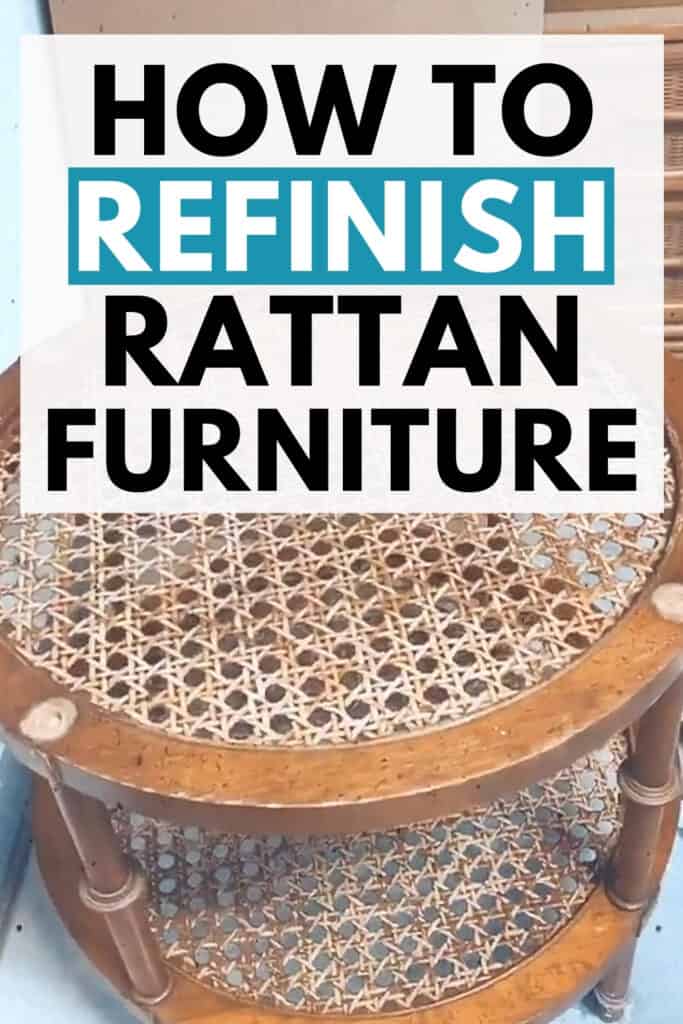

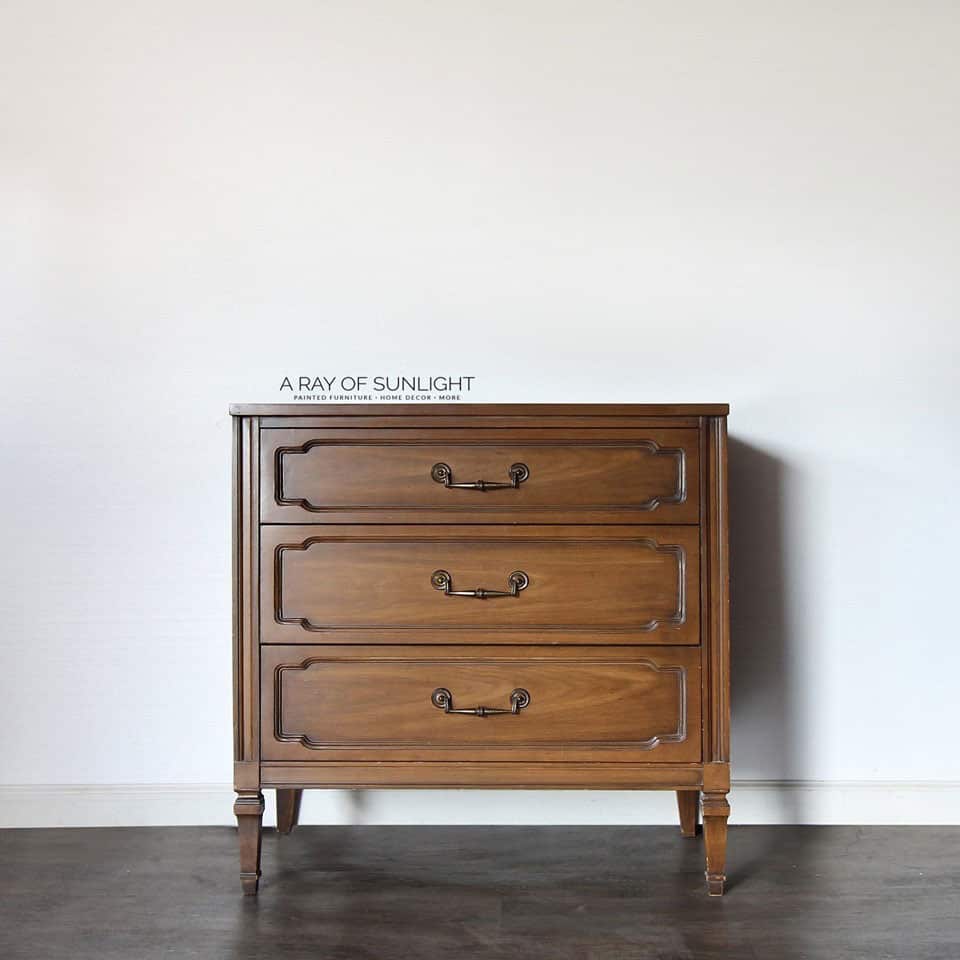
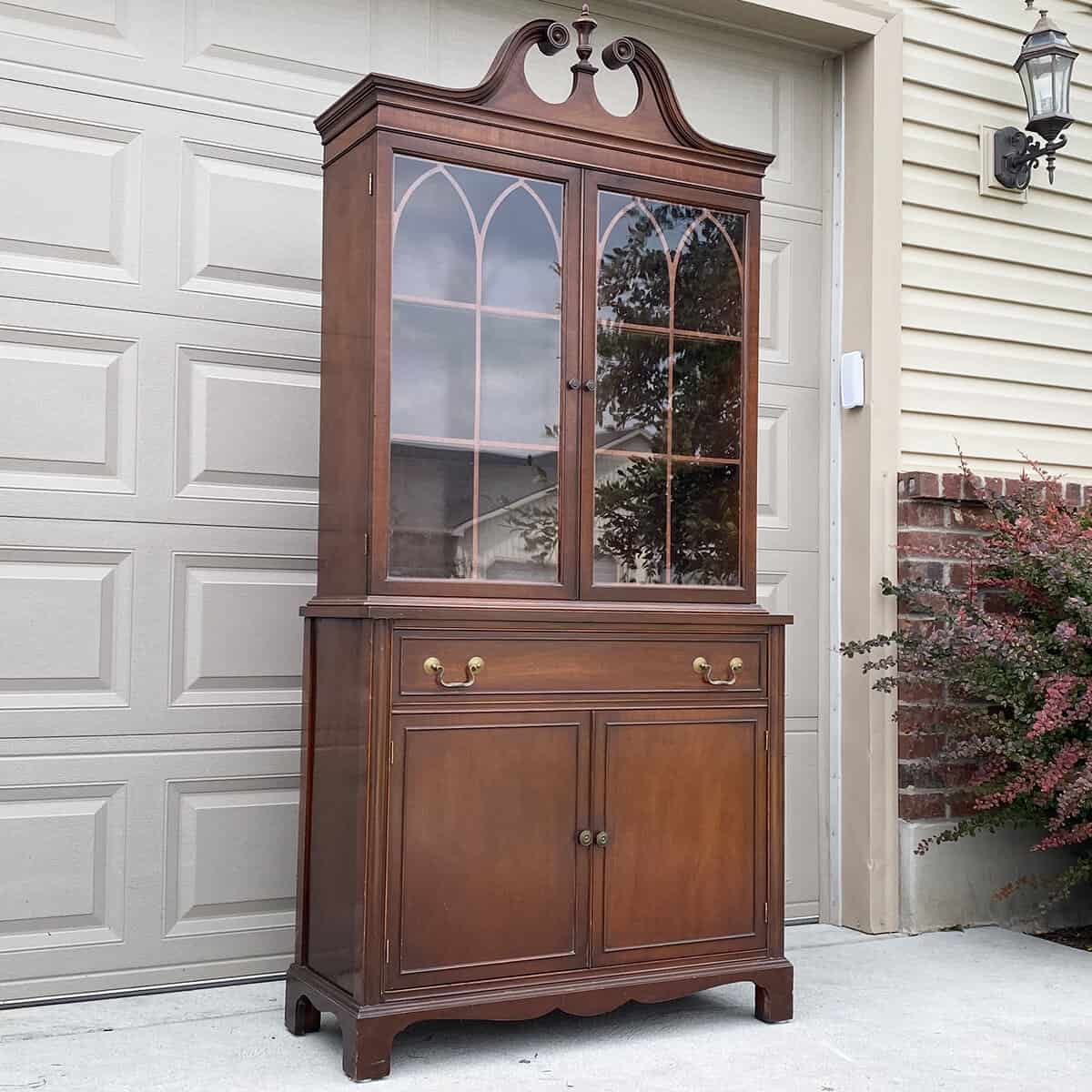
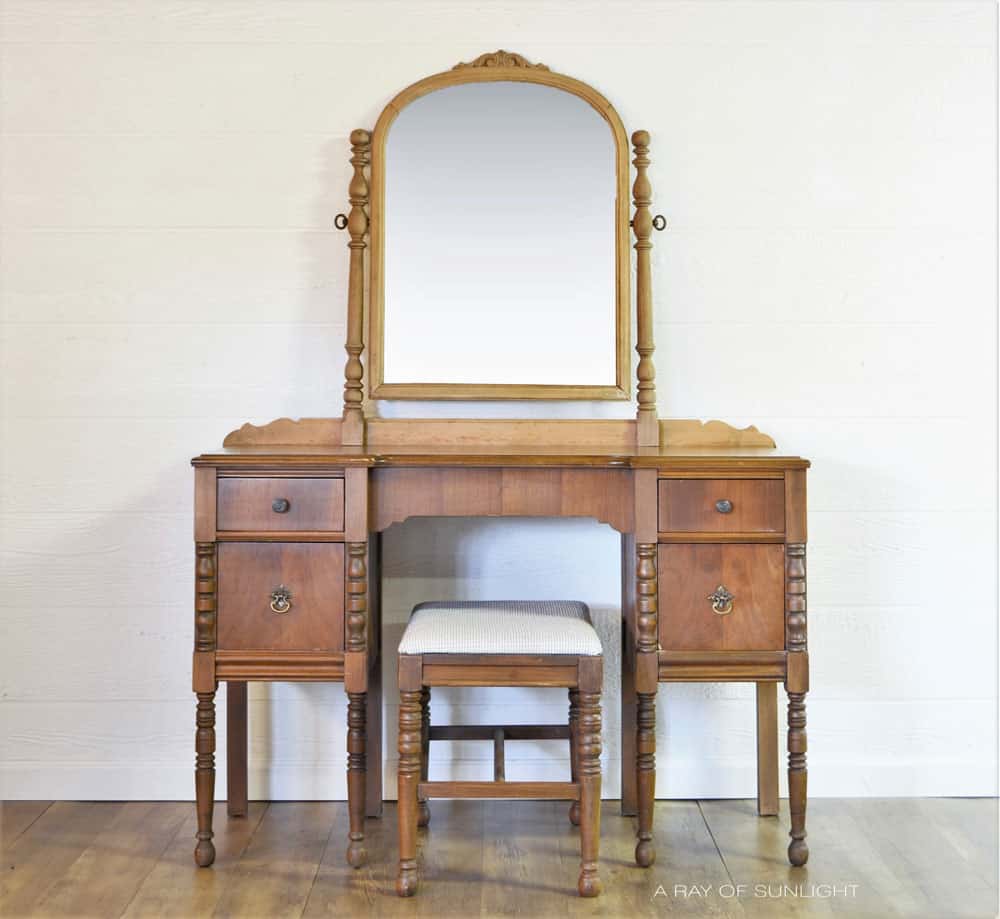
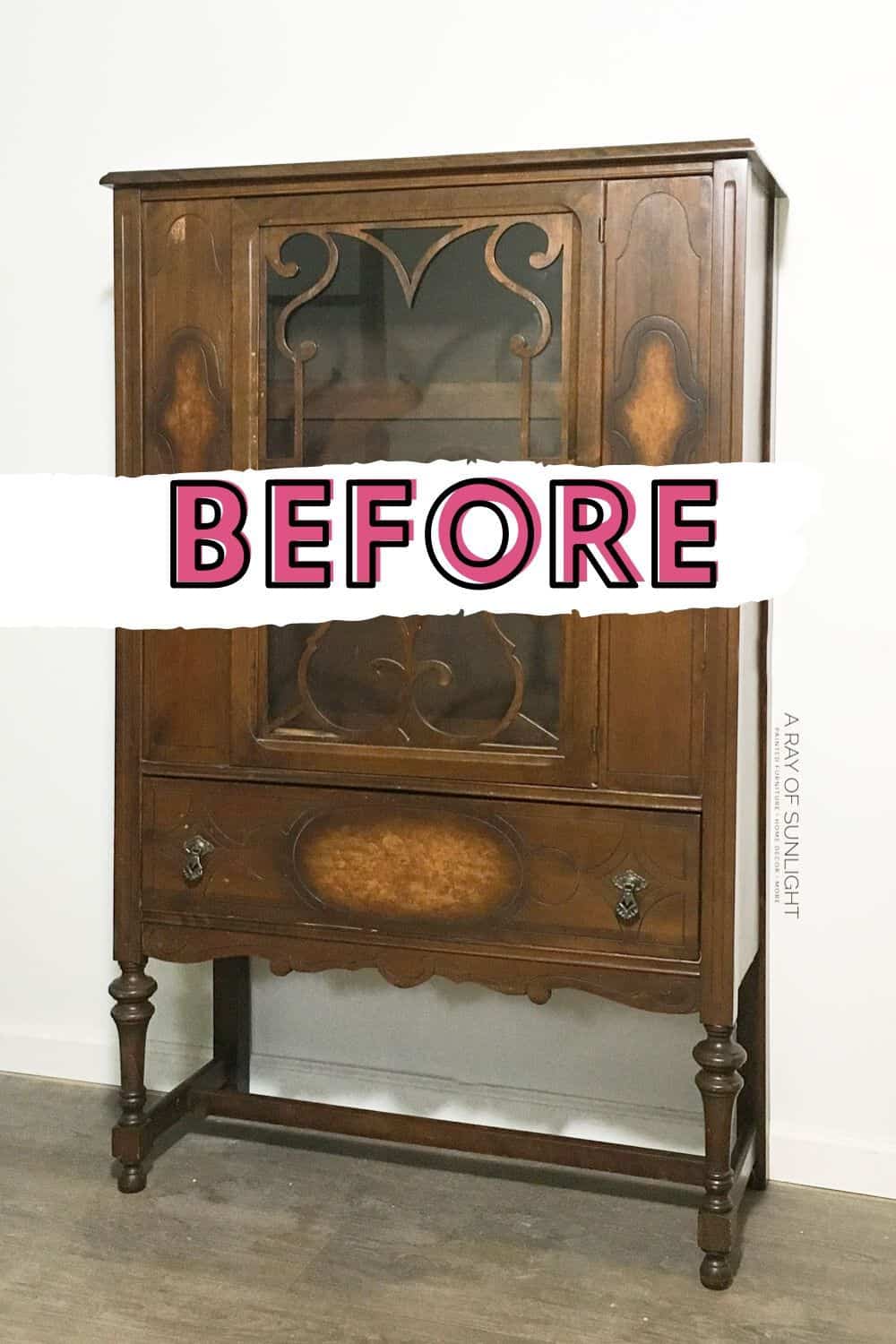
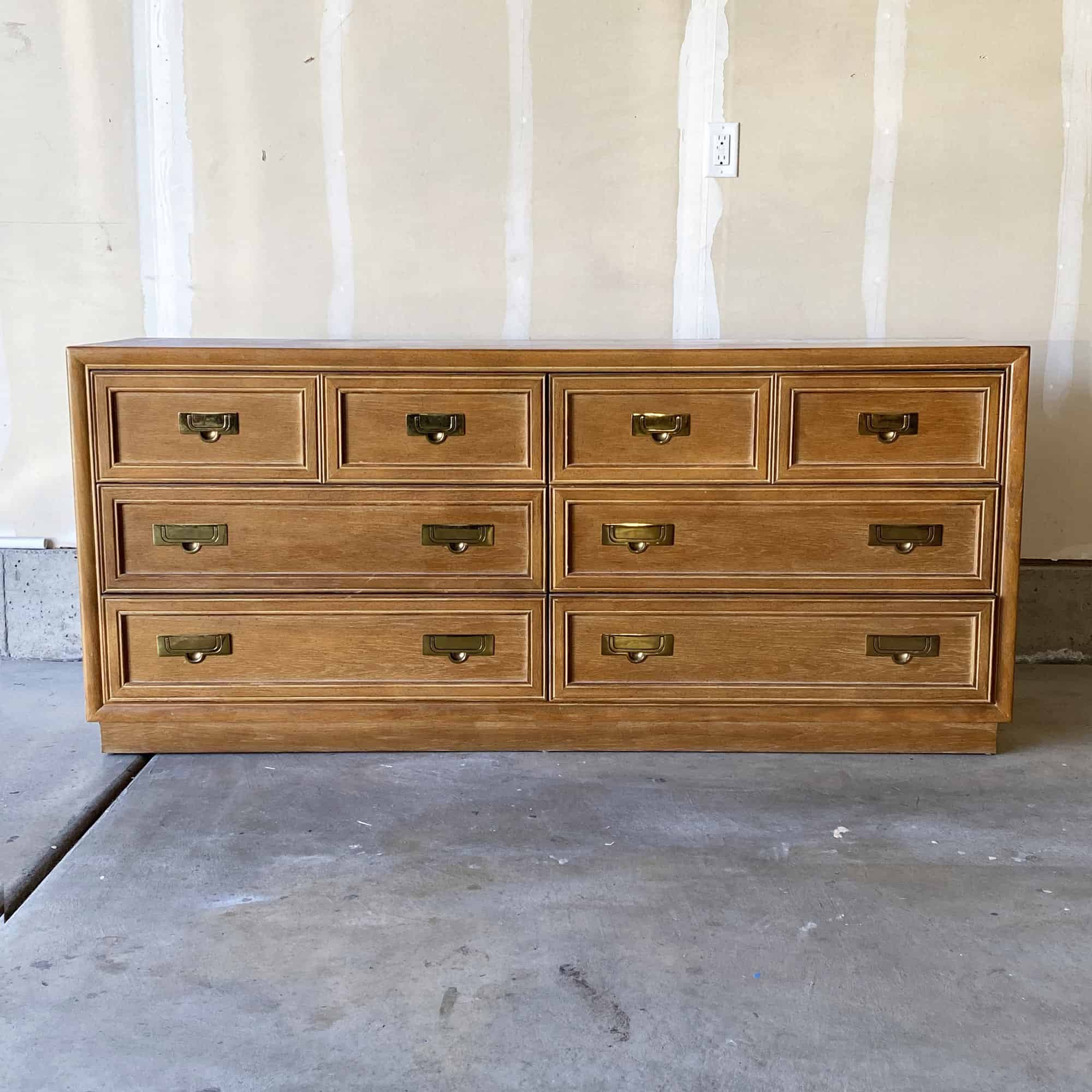
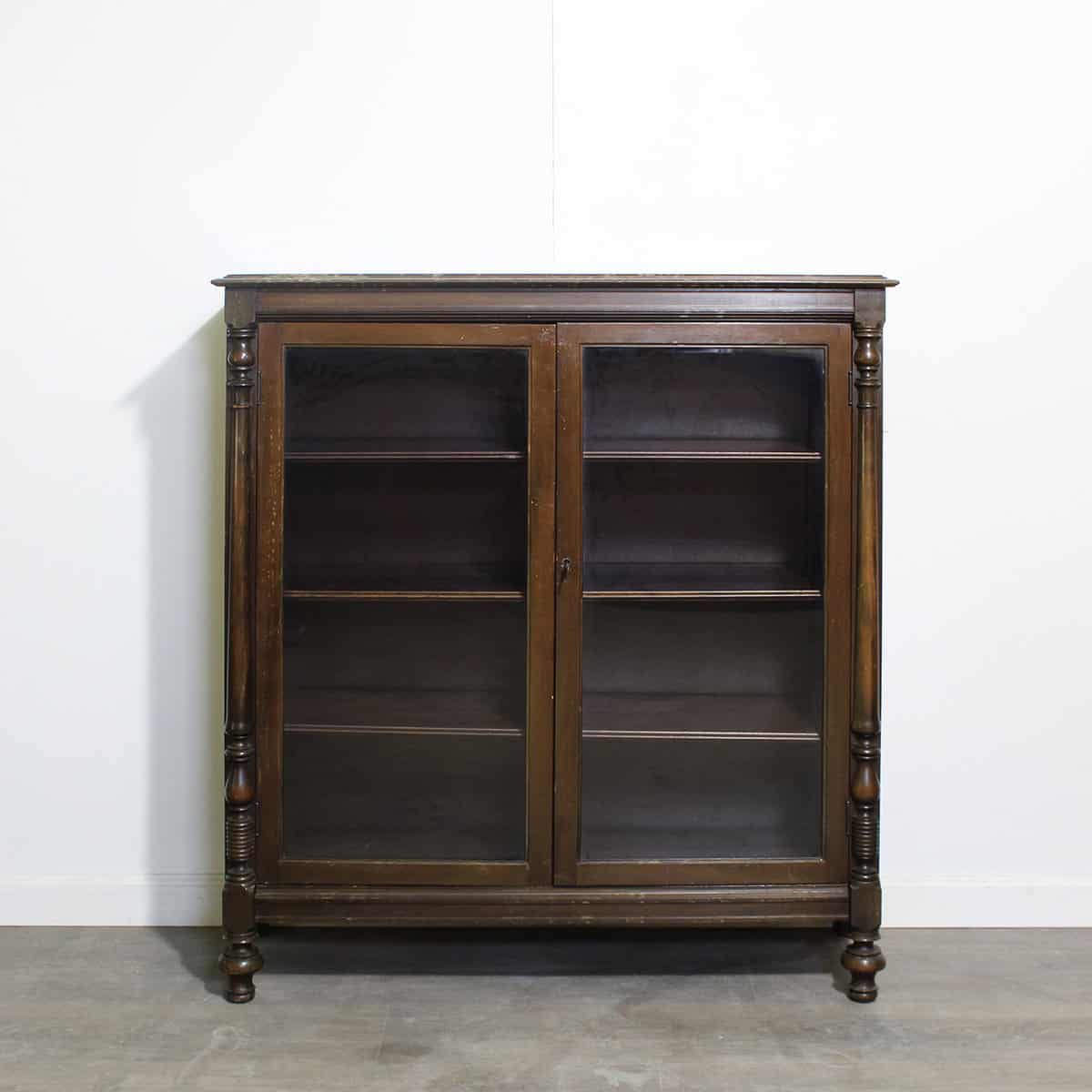
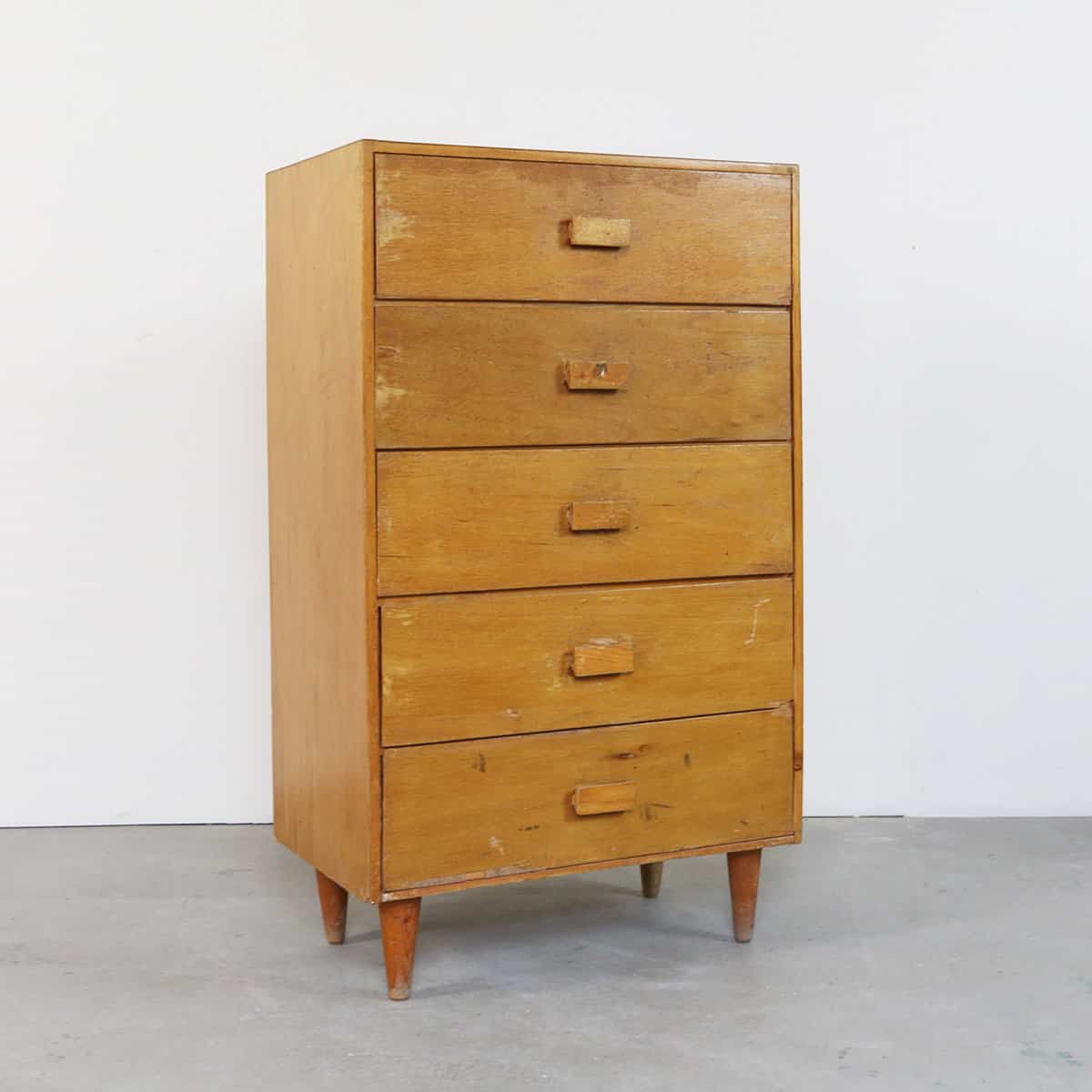
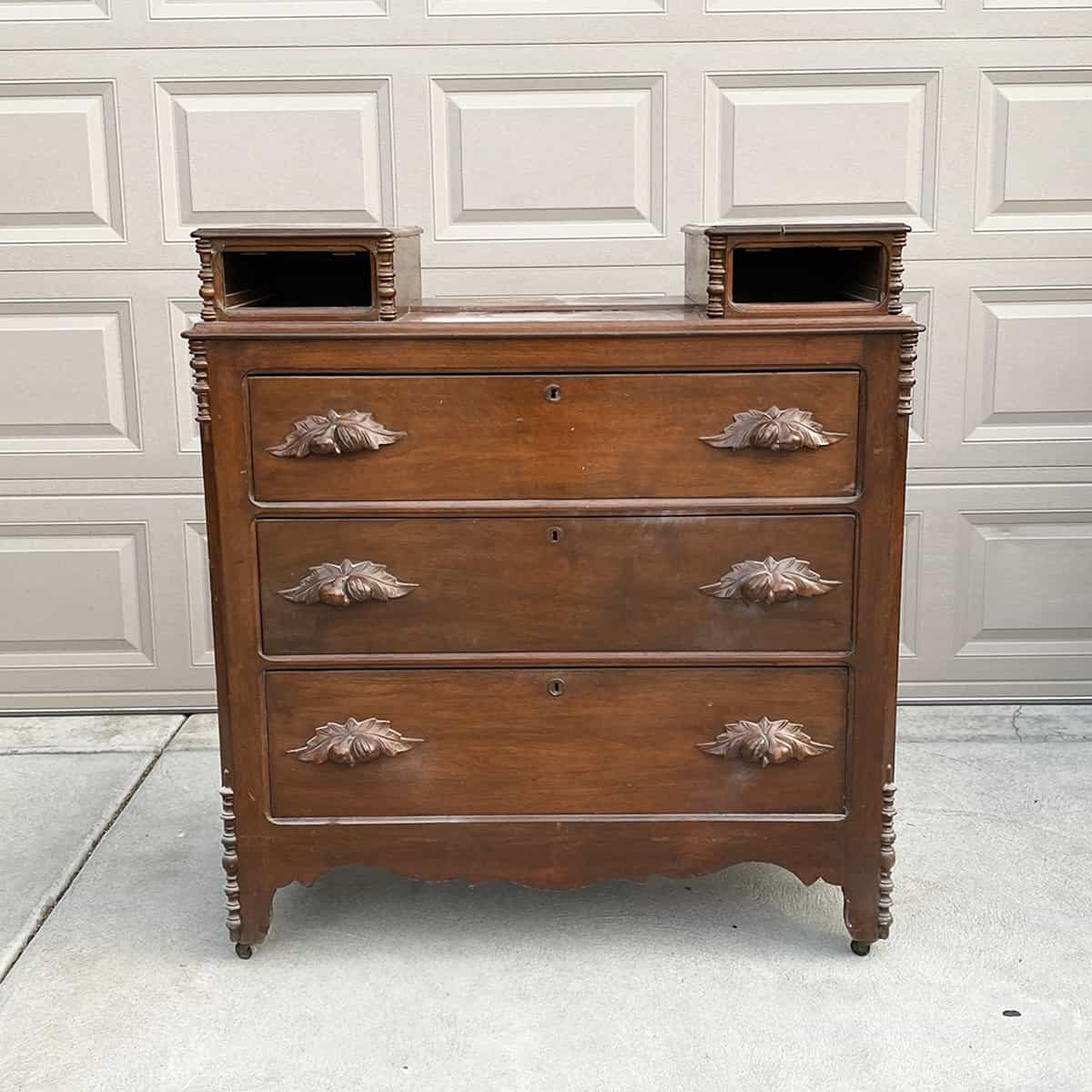
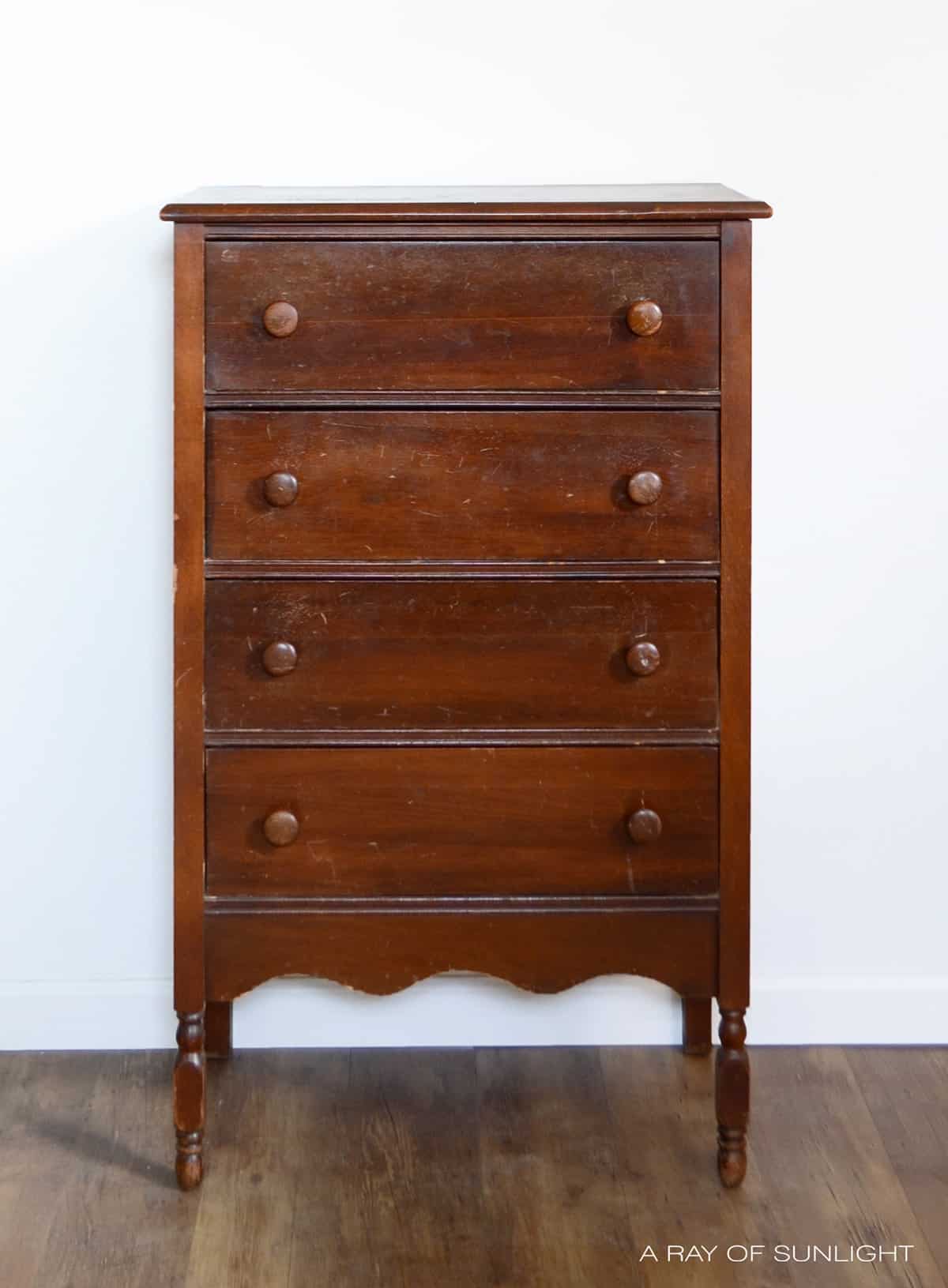
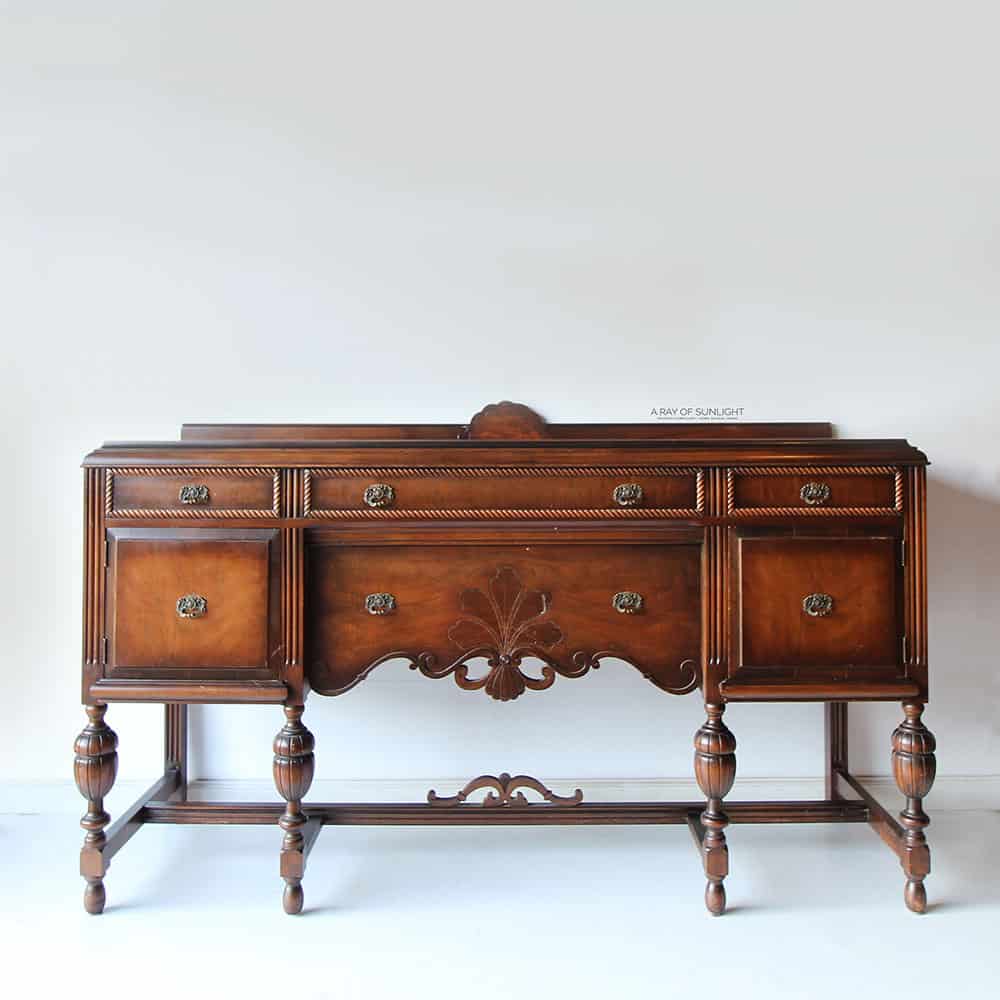
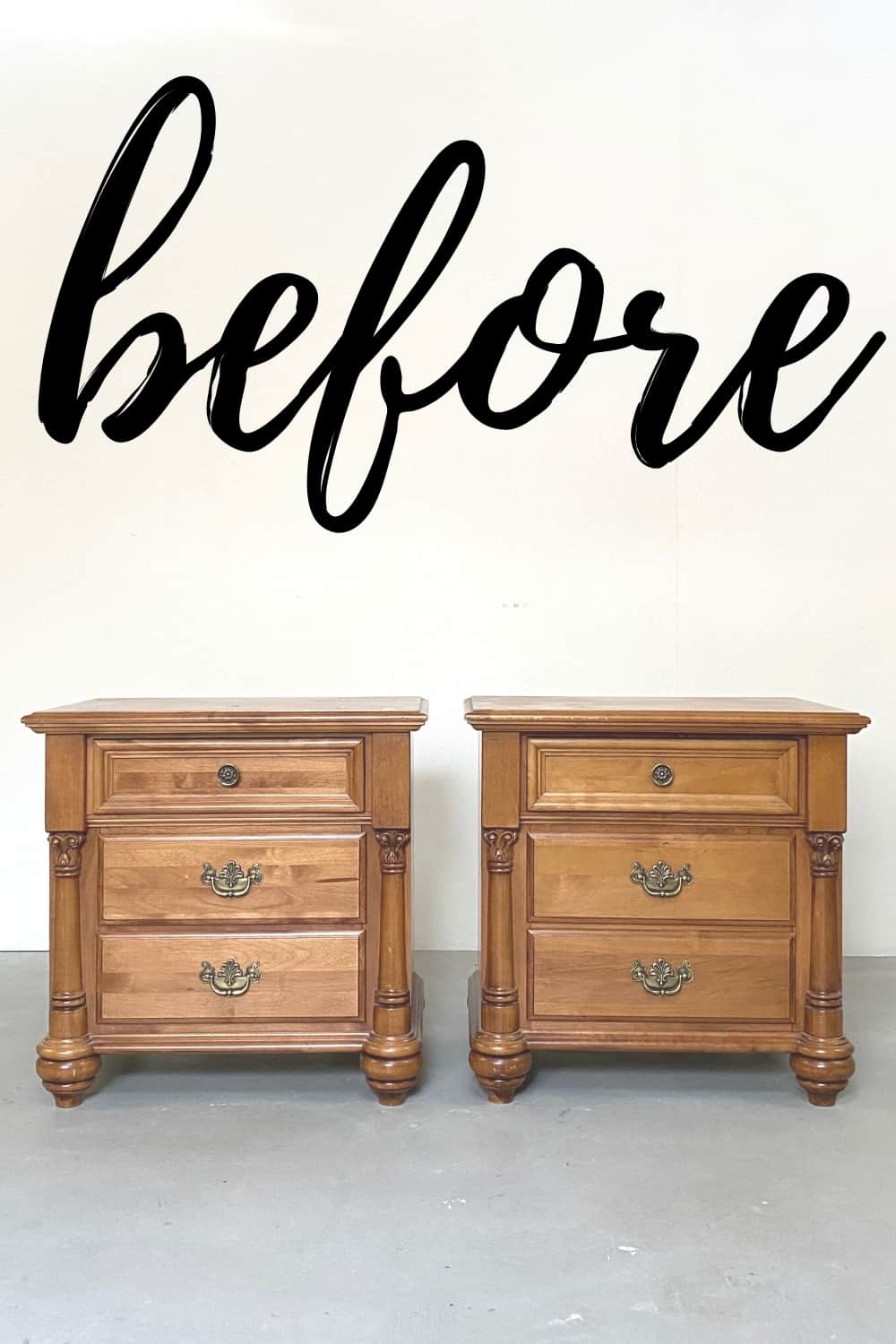

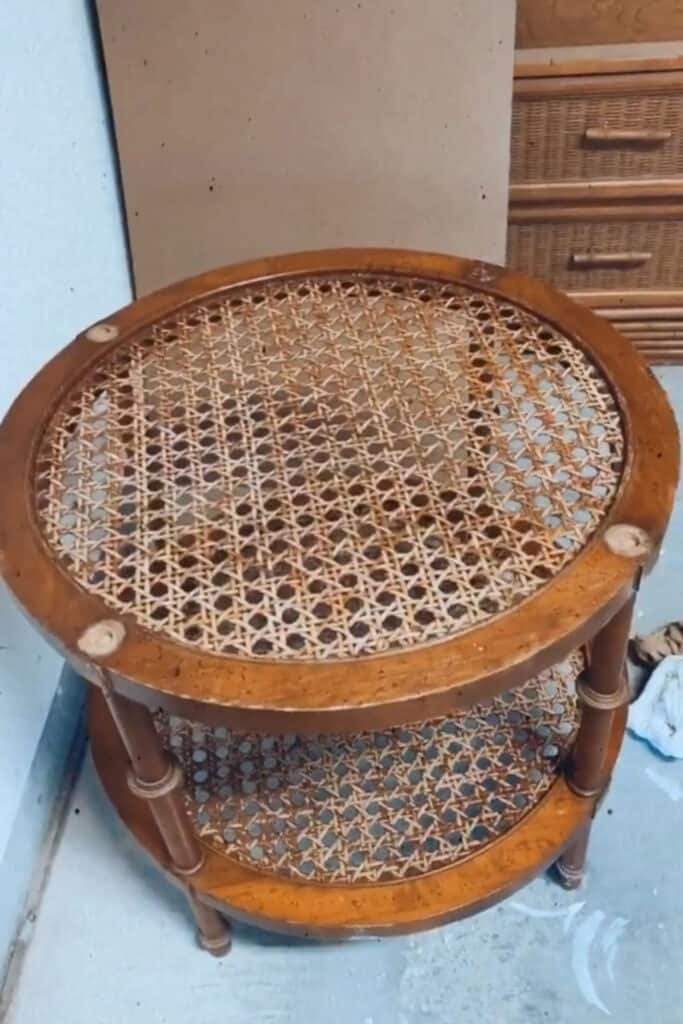
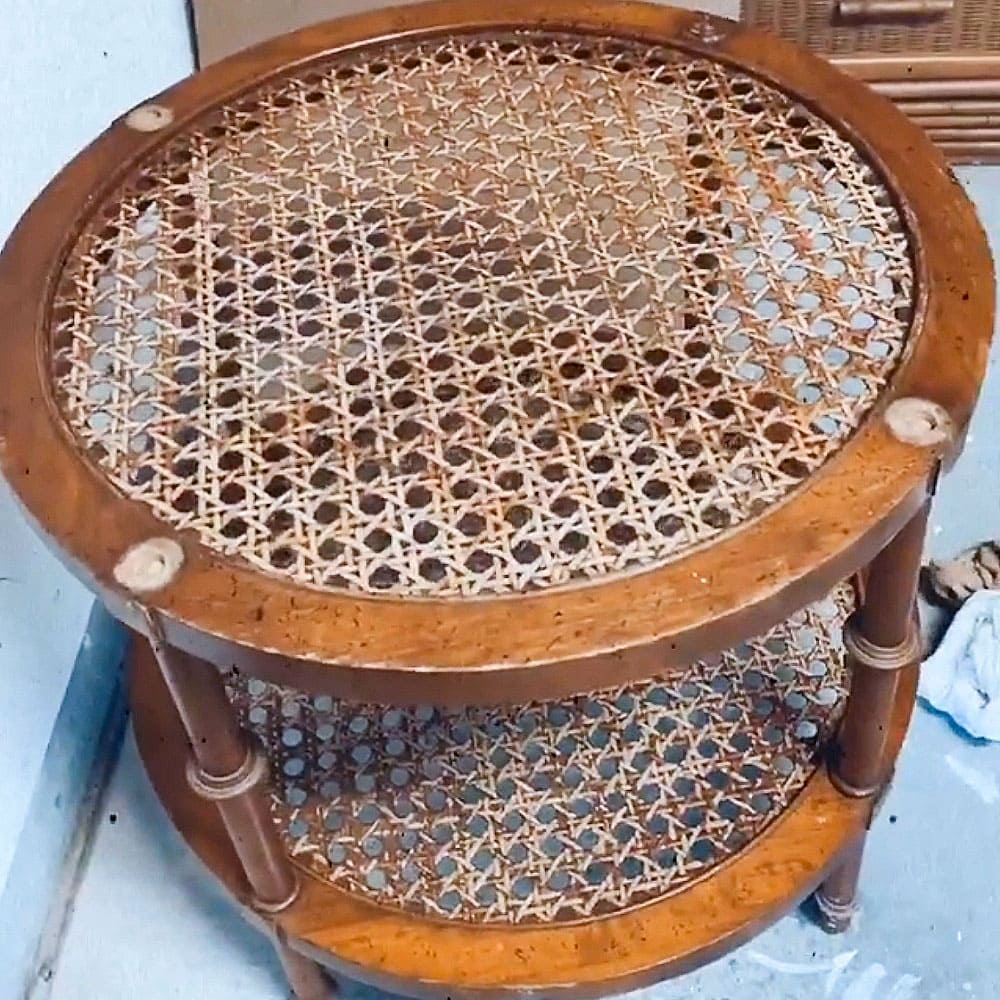
This was such a Beautiful Transformation, Absolutely Gorgeous. I Love it❣️?
I see a lot of woven rattan and pass it up because it’s so dated looking without a clue how to update it. Bam! This technique is genius! Your table is so elegant and I appreciate you sharing how you updated it.
I have a question! I’m painting a rattan headboard to look like the serena and lily ones. Natural color on the rattan with a white body. Do I need to do the fossil step? Or can I prime and just do the khaki? Thank you!!
For best results, I would do the fossil and khaki.
Love love love your work….amaaaazing !
I tried to follow the steps you provided but my caning seems darker than the natural caning. How did you get your caning light to match the natural caning?
Where’s the after picture of the first post? I only see the black one.
I think you’re talking about this one? https://arayofsunlight.com/how-to-repair-rattan-furniture/ It’s titled as how to repair ratan, so maybe that’s why you couldn’t find the link. But you can see how it was sprayed to look like natural ratan.
This might be a silly question, but do you have an tip for taping curved lines? I just did the fossil and khaki spray (looks great!) on my rattan, but now I’m wondering how to properly tape off the curved angles of my furniture before painting the body black. Thanks for any tips!
I wish I had a great tip! The best tip I can give is to use small pieces of tape when it’s curved and just slowly tape it off. Best of luck! And I’m so glad you love the fossil and khaki spray look!
Wow what a great job. I’ve been looking for an ideal on how to finish this type of table. Thank you
I have no idea, but it’s worth a try in a small hidden area! I have painted leather that is on wooden furniture before.
You did not mention the glass tops. Where did you purchase them and how much did they cost?
The glass top came with the table.
Oh I love this tables! It looks so classy!
Beautiful! Did your table top have 4 decorative knobs that you removed? If so, how did you remove them and what did you use to cover the exposed area?
There were 4 knobs on top yes, but they are still on there.
I was wondering how long should I let the Cain dry before applying the tape to paint the body black?
Let it dry at least 24 hours, and only use frog delicate tape on top of fresh paint.
I have a rattan wicker chair from Pier1 that is in good shape but has an orangey brown tone -Do you think this technique would work to make it look like natural straw colored rattan (like the Serena & Lily ones?)